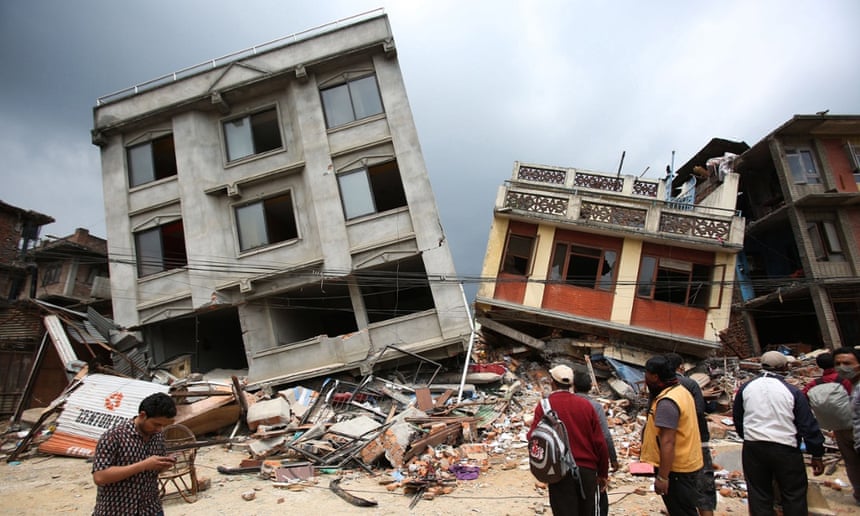Virtual Earthquake Reconnaissance Team (VERT) Summary by Lauren Biscombe & Candice S. Avanes.
At the Third Session of the Global Platform for Disaster Risk Reduction (Geneva, 2011), Secretary-General of the United Nations, Ban Ki-moon, remarked that “by our actions, we can either compound disasters or diminish them.”

(c) UPI/Landov/Barcroft Media
Communities have the power to keep natural hazards from turning into disasters. Resilient communities can bounce back from the unexpected because they expect it, to a certain degree. As Robin Cross points out in an article for The Guardian, earthquakes and other disasters are “when not if events”. With greater preparation comes lesser Social Impact and need for Emergency Response.
And that’s why Community Resilience is the subject of our first post on the response to the Nepal Earthquake.
Below is a selection of links to items we’ve found to be interesting. Please let us know by commenting on these posts what you’d like to see more or less of, and feel free to pass along any worthwhile articles, videos, pictures, etc that you’ve come across.
Nepal’s preparation for resilience
The Nepal Risk Reduction Consortium (NRRC) was officially launched in 2011 as a partnership between humanitarian, development, and financial institutions and the Nepalese government. Its purpose is to reduce risk, respond more effectively to emergencies, and coordinate disaster management by focusing on 5 priorities:
1. School and Hospital Safety
2. Emergency Preparedness and Response
3. Flood Risk Management
4. Community Based Disaster Risk Management
5. Policy/Institutional Strengthening
To learn more, check out the program’s page on the UN website or this introductory video.
Nepal’s performance – have they achieved resilience?
Food security: The planting season is approaching and if Nepalese farmers cannot recover quickly enough from the earthquake, they may not be able to harvest rice until late 2016. The damage has not yet been quantified, so an analysis of their level of resiliency is impossible at this stage, but anticipated losses include livestock, crops, food stocks, and agricultural inputs, in addition to critical infrastructure for irrigation, drainage, and the transportation of goods.
Communications systems: 47 Emergency Operations Centres (EOC) around Nepal have proved their worth by keeping lines of communication open between the central government and local communities, which has allowed for improved coordination of search and rescue operations and emergency aid teams. These EOCs were part of a program initiated by the Nepalese government with support from the UN Development Programme (UNDP).
Nepal Earthquake 2015 Situation Report No. 7 (30 April 2015): Tents, food, and water are a few of the most critical needs but accessibility to remote areas and the helicopters that are often required for this have proven to be a bottleneck. While communication between the EOCs on a national scale seems to be intact, more regional systems have experienced some disruption, with only mobile text messaging functioning at first in Kathmandu Valley. Current priorities for aid workers now comprise dead body management, and the identification and location of missing people.
For real-time updates on the situation (plus loads of pictures and thoughts and reactions), check out:
https://twitter.com/hashtag/NepalQuake
https://twitter.com/NepalDRR
Curated topics from the April 25, 2015, Nepal Earthquake to help inform reconnaissance activities, identify impacted regions, and help document the timeline of earthquake response/recovery.
Information on Emergency Response, Social Impacts, and Community Resilience from the April 25, 2015, Nepal Earthquake.